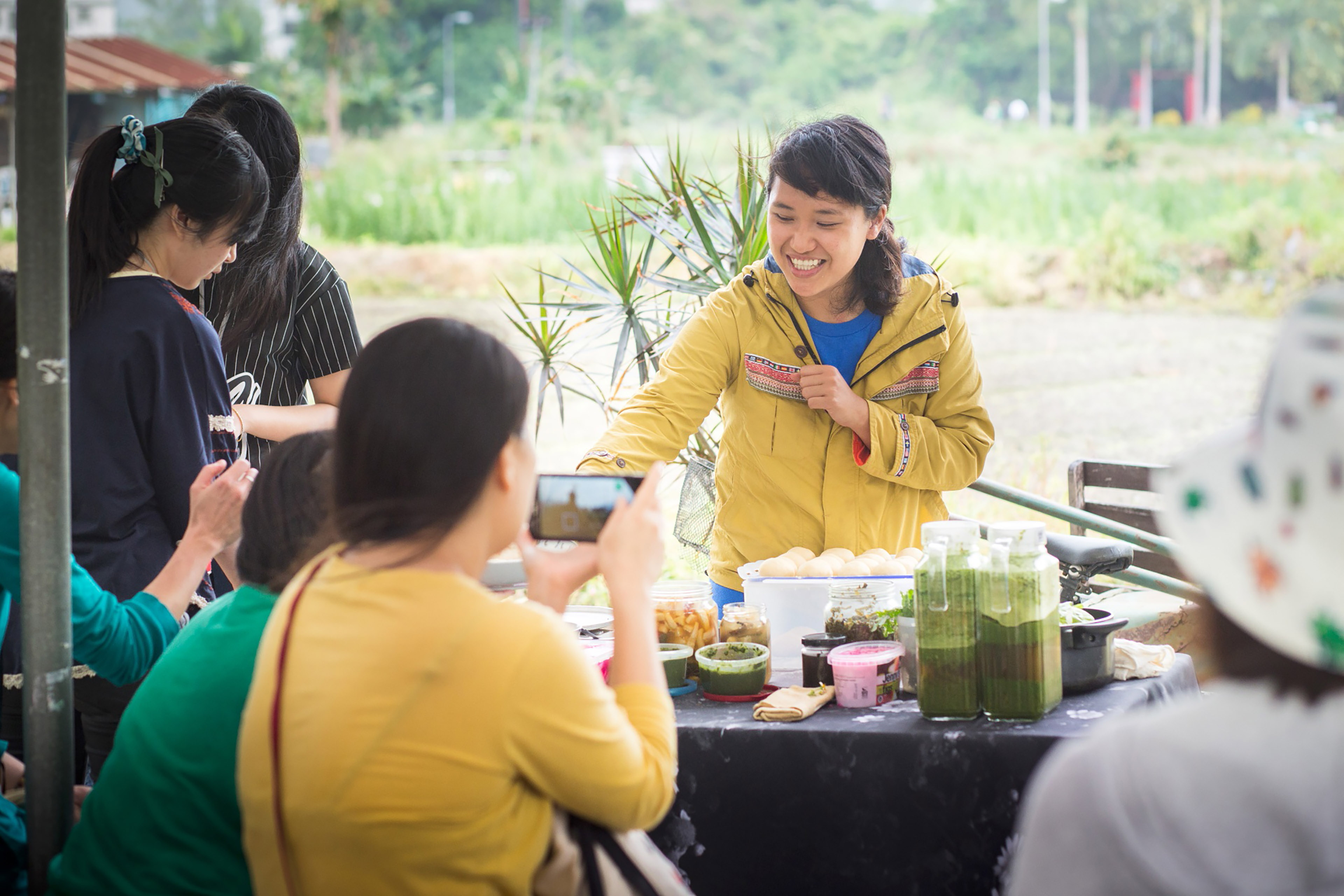 |
|
Lo Lai-lai Natalie holds an organic food workshop at Sangwoodgoon. Photo by Andy Wong, provided by Little Post. |
 |
|
Lo Lai-lai Natalie holds an organic food workshop at Sangwoodgoon. Photo by Andy Wong, provided by Little Post. |
Lo Lai-lai is an artist from Hong Kong. Her creative mediums include video, photography, installation, etc. In 2006, she received a Bachelor of Arts (Fine Arts) from the Chinese University of Hong Kong. Later, she worked as a reporter for a travel magazine and returned to school in 2015. In 2017, she obtained a Master of Fine Arts from the Chinese University of Hong Kong.
Lo’s solo exhibitions include "Give No Words But Mum" (Tomorrow Maybe, 2019), "Down into the Abyss" (Bonacon Gallery, 2018), "Slow-So TV Show Room- Ann Eilathan’s Gaze" (Floating Projects, 2016), "Souvenir and Gift" (Observation Society, Guangzhou, 2014), etc. The group exhibitions she participated in included the “OSTRALE Biennale 019” (Germany, 2019), "Today Could Have Been a Happy Day" (Taikang Space, Beijing, 2018), "Fishpond Art Festival" (Tai Sang Wai, Yuen Long, Hong Kong, 2018), "The HK FARMers’ Almanac"(Spring Workshop Hong Kong, 2015), etc. She was the WMA Commission Recipient (Theme: Opportunity) in 2018-19. Her work "Deep Flight" was shortlisted for the "Open Category" of the 23rd Hong Kong ifva Independent Short Film and Video Media Awards. The Sigg Collection also collects her work.
Lo Lai-lai described her lifestyle as "Half-Farming, Half-X," focusing on artistic creations related to natural ecology. The concept of "Half-Farming, Half-X (はんはたはんX)"comes from Japan. In the 1990s, Naoki Shiomi observed the contradiction between people’s life and the city, so he proposed a way of life that established a little more relationship with nature. Lai-lai shared her understanding of “Half-Farming, Half-X" at an artist talk, "You can say that this kind of life is ideal and free, but it is difficult to practice. For example, when it comes to allocating time, there will be many contradictions in the process; this is a question between "Half-Farming" and "Half-X." "X" is your talent other than farming. The question is, how do you practice a mutually complementary and influencing lifestyle."[1]
In another article, Tang Siu Wa further elaborated on the relationship of "complementarity." "She was in the field, originally not as an artist. She didn’t intend to turn her life experience into creation. It’s just that she has been working and living in the field for a long time. “Naturally, want to record the state of emptying during farming and the state of labor." Hence, she put some hand-held video devices in the field, and there is a lot of footage over time, which is a huge database that records the changes in the land."[2]
One can say Lai-lai's art is not necessarily about farming. She is not "farming because of creation" nor "creating because of farming." Instead, she cares about building a relationship with nature. Farming is her way of life, and creation is her method of communication. The research team records several of Lo Lai-lai's creations and looks at the interaction between farming and creation.
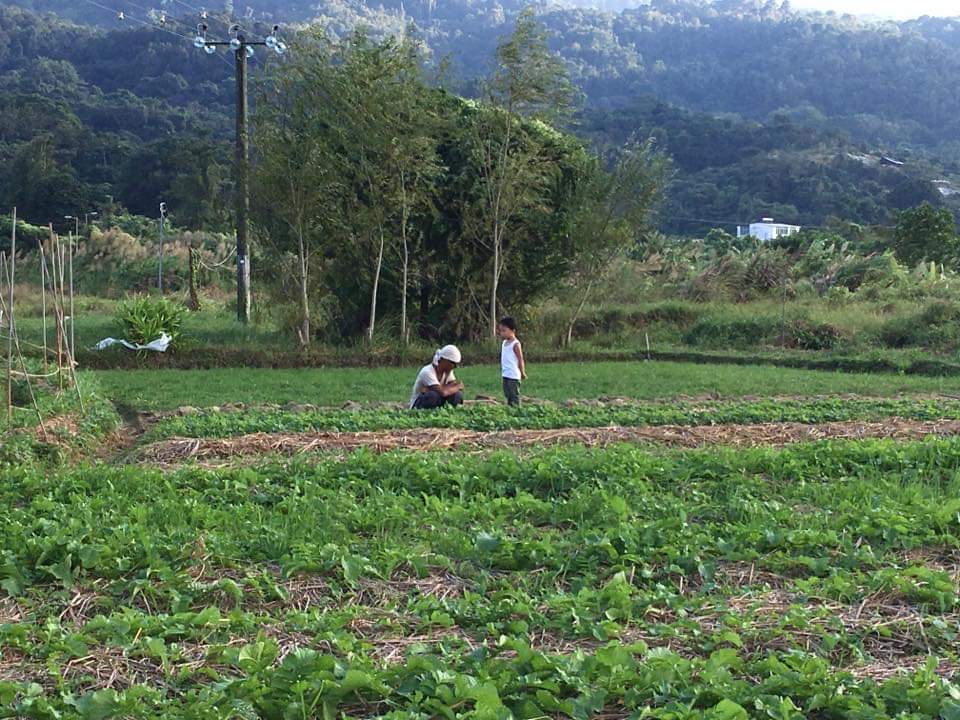 |
|
Sangwoodgoon. Photo courtesy of Sangwoodgoon |
In 2005, the Hong Kong government began planning to construct the "Guangzhou-Shenzhen-Hong Kong Express Rail Link" (XRL) (Hong Kong Section). The most controversial issue included the demolition of Choi Yuen Village. The land resumption area for the XRL hong kong section was 27 hectares, of which about 4 hectares belonged to Choi Yuen Village. In 2008, the government issued a demolition order on Choi Yuen Village without consulting the residents. Various cultural workers, social activists, artists, etc., established the Sangwoodgoon, a farming collective. They learned to farm, practiced to farm, and responded to what happened in Choi Yuen Village with farmland practices. Since then, Lo Lai-lai started trying to understand farming. "The (XRL) project at that time made us, a group of young people living in the city, feel uncomfortable. However, we can't do much. We felt that we should protect some natural things in the suburbs, but we had no farming experience." Lai-lai said in an interview. Therefore, she and her friends began to learn farming from their teacher. Her teacher once said: "You have to learn what this is all about, and then you will know how good and how difficult farming is."
In other words, it was through physical practice to truly appreciate the relationship between oneself and the land. Finally, in January 2010, the Legislative Council approved more than 60 billion in high-speed rail funding, and the entire high-speed rail was officially in operation in 2018. At that time, some of the villagers in Choi Yuen Village moved to New Choi Yuen Village. Lo Lai-lai and her friends continued their farming lives in the Sangwoodgoon. The farming works include hoeing and turning soil, seedling, composting, irrigation, preventing or treating pests, harvesting, and selling goods.
In 2015, Lai-lai participated in "The HK FARMers’ Almanac" of Spring Workshop. She designed a piece of furoshiki (Japanese wrapping cloths) in two colors, lake blue and mint green, with 88 steps of rice cultivation printed on it, such as dibbling of rice seedling, weeding, fertilizing, etc. She hoped that the user would remember the origin of the rice grains when wrapping the lunch box with this cloth.
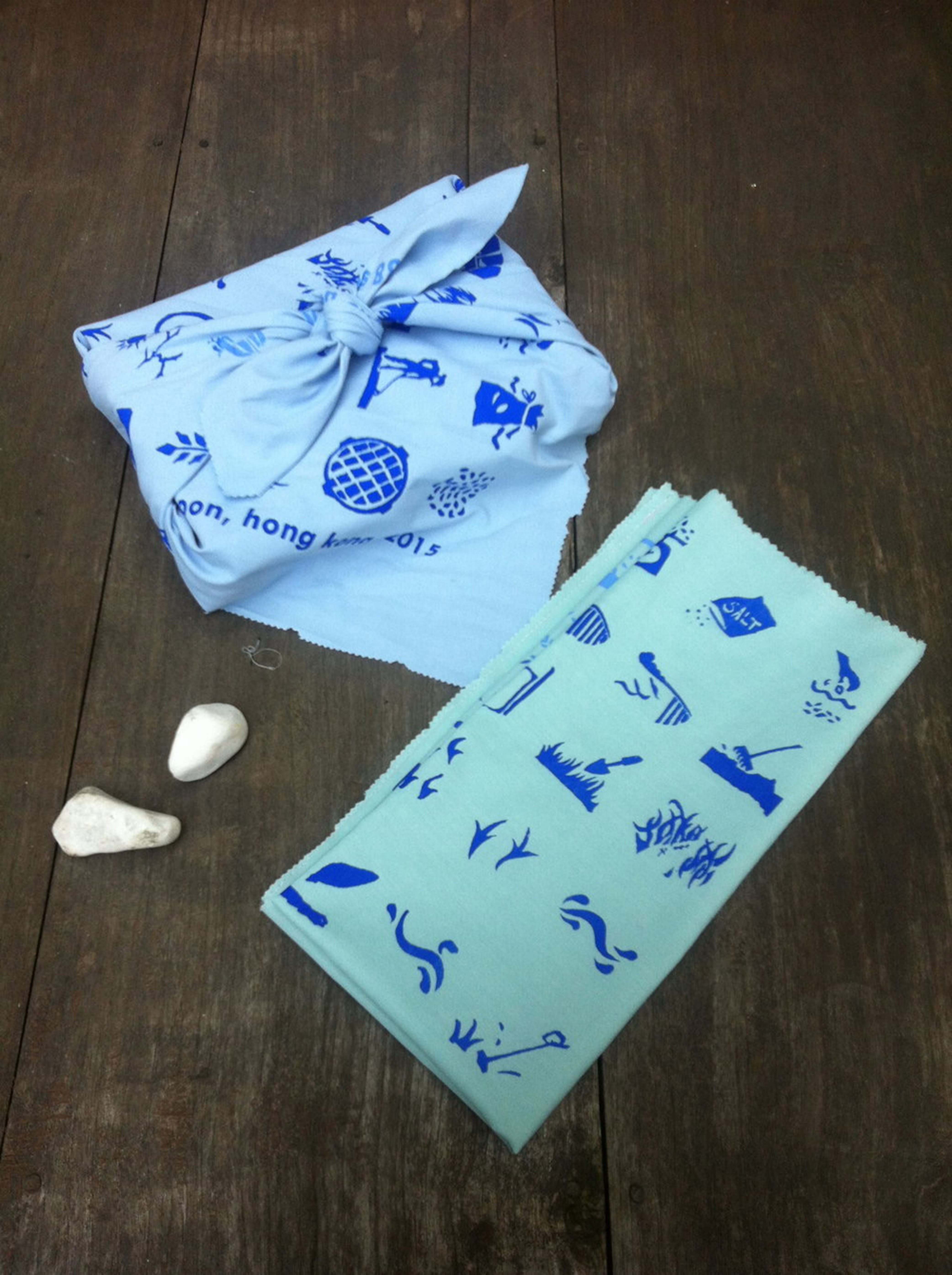 |
|
The hand-silkscreened furoshiki of "The HK FARMers’ Almanac." |
After returning to the School of Art in 2015, she created a video, "Goodbye Hong Kong." One side of the video presents the music created by the artist Wong Hin Yan, and the lyrics are displayed like a karaoke version. On the other side, a sign language translation of the lyrics is filmed. The farming scene in front of the high-speed rail site is added in the video. "The protest song becomes a hit again in different generations. When could be encounter a new chapter of Hong Kong?" This is Lai-lai's footnote to this work.
“Goodbye Hong Kong”
2016-17 / 8‘35“ / HD single-channel video
“The impact of a social movement on some people can be close to zero, but it may be an earth-shaking turning point in life for a small group of people. The "anti-high-speed rail, save Choi Yuen" movement has been a major change for me and a group of friends. For me, that was the first social movement that I participated in. Although I was not standing on the front line, looking back at the current situation, it was even very “Wo Lei Fei” (which means 'peace,' 'rationality' and 'non-violence' in Chinese). However, "Thousands of People Angrily Support Choi Yuen Village" action, the scene of tens of thousands of people surrounding the Legislative Council and the patrol group guarding the village was shocking that year. But when I participated in it, I couldn’t help but hesitate about my identity. Where should I exist? Do we have to chant the same slogan? The group was very infectious, and I followed the same frequency to jump up. But at the social movement scene, there was inevitably a binary opposition. After the movement, where shall we go? "[3] Lai-lai said in a conversation with Para Site curator Qu Chang.
After experiencing several years of social movement, Lai-lai returned to school, began integrating her previous experience and ideas, and developed her artistic language. She was particularly interested in essay-style films, "I like words. It’s good when I’m farming or traveling, and I would also shoot some shots. I didn’t want to connect them when I was shooting. It is also my most natural creative status. After a while, I will look through these fragments to think about how to do the work. This is my method of creation.” Lai-lai shared her thoughts with the research team.
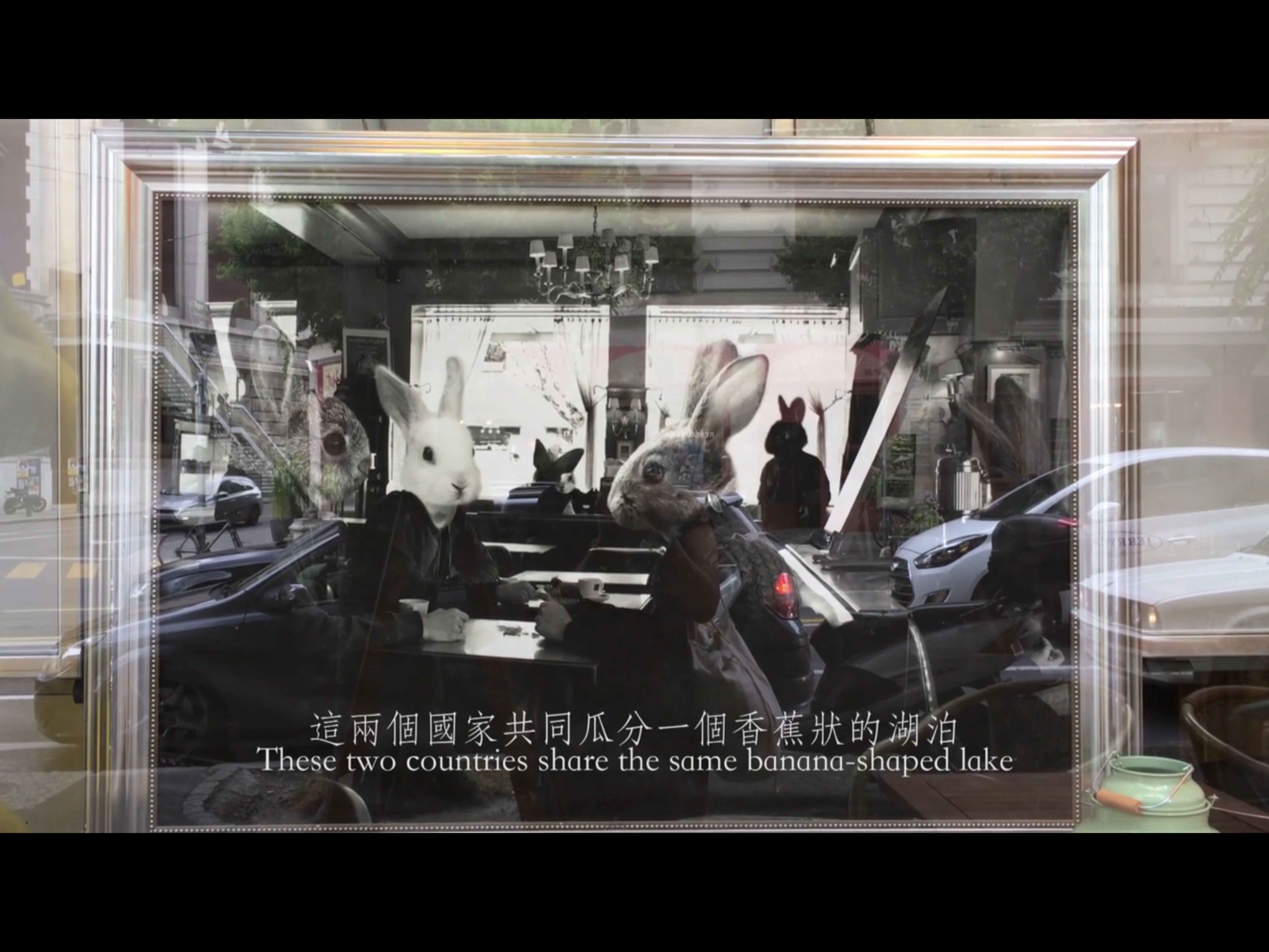 |
|
"Glacier"(still) |
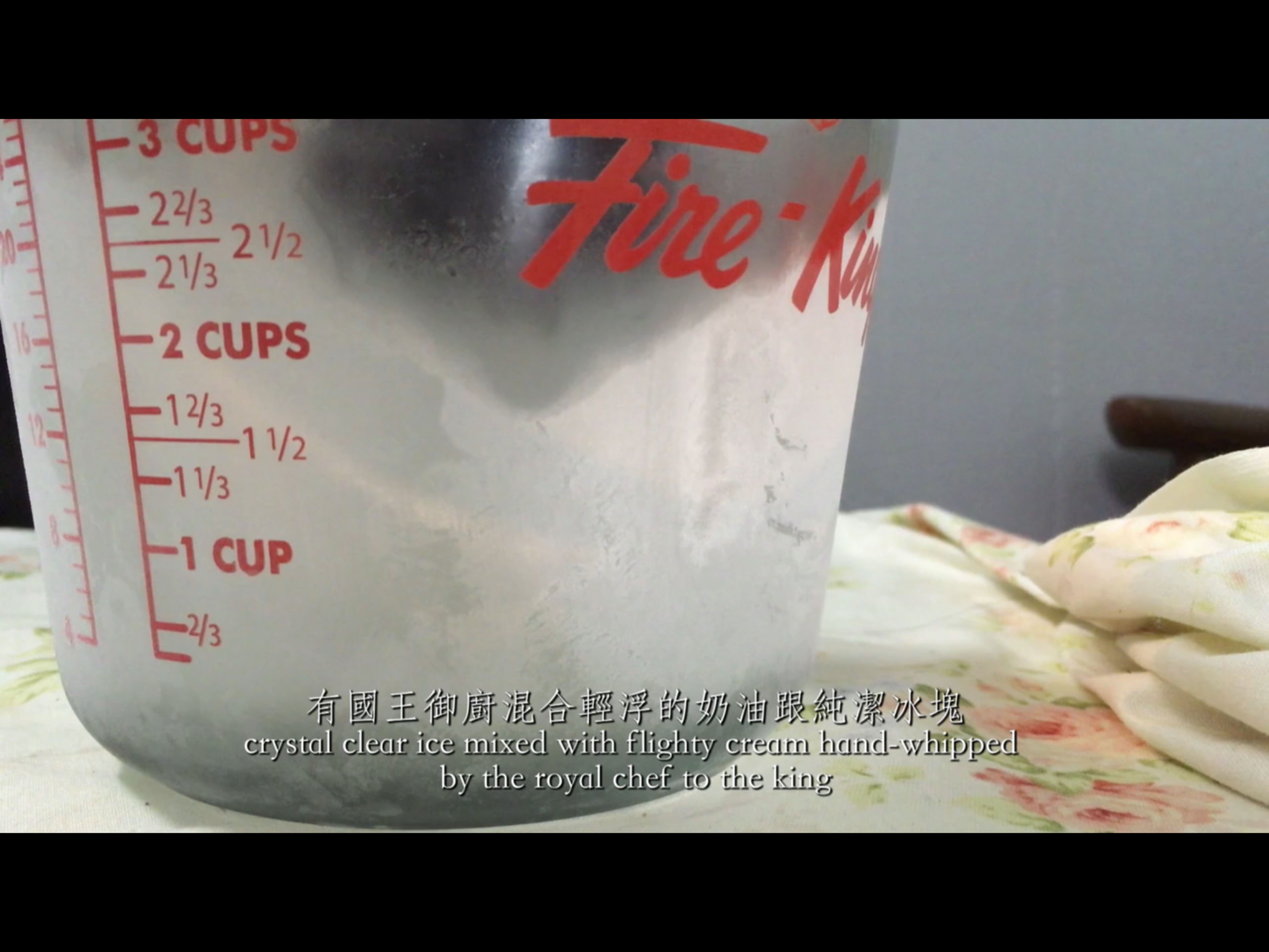 |
|
"Glacier"(still) |
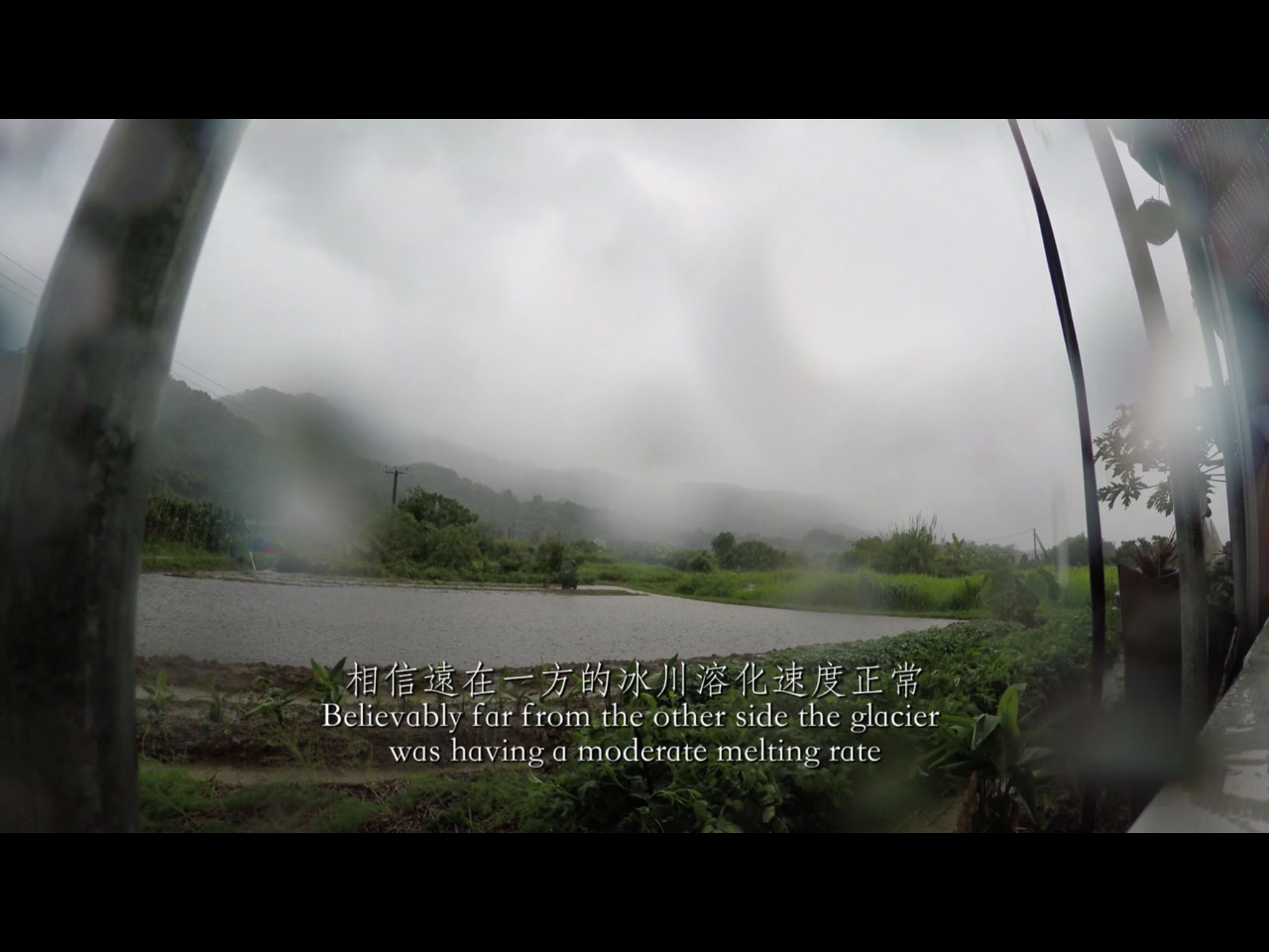 |
|
"Glacier"(still) |
|
"Glacier" |
“Glacier” talks about the entangled relationship between the glacier and the ideal behind farming. The film is interspersed with scenes from a coffee shop where she was traveling in Switzerland and farming in Hong Kong, a rice field in the rain, a bird-proof net covering the growing ears of rice, and the farmer harvesting rice and milling the rice.
The film's text was like a stream of consciousness prose, starting with the idea of daily meetings and then talking about fictional places, such as the legend of G City and Banana Lake. Lai-lai connected the ice of the "glacier" with ice creams and unfolded her thoughts on food sources, manufacturing, and human consumption. The film did not directly mention the words "temperature rise, melting glacier" but composed a 17-minute movie based on the artist’s fantasy and life experience. In her solo exhibition at Guangzhou Bonacon Gallery, Lai-lai even created “Glacier in Progress,” a cup of melting ice cream by using chlorinated polyvinyl chloride (CPVC) to respond to the video with the sculpture.
"The description of Lai-lai's narrative is not logical but is connected by intuition, analogy, and imagination. This connection appears densely between text and text, video and video, and even text and video. It makes the work seem in different dimensions, just like weaving three layers of sky, land, and sea in the film - talking about the story of the sky in the first second, jumping to the problem of the sea in the next second. Still, you may not be able to see the issues of the sea clearly when you are in the sea. However, you have the opportunity to see more clearly, if you look at the sea from the sky. "[4] Art critic Fizen Yuen described Lai-lai's creation in a review article.
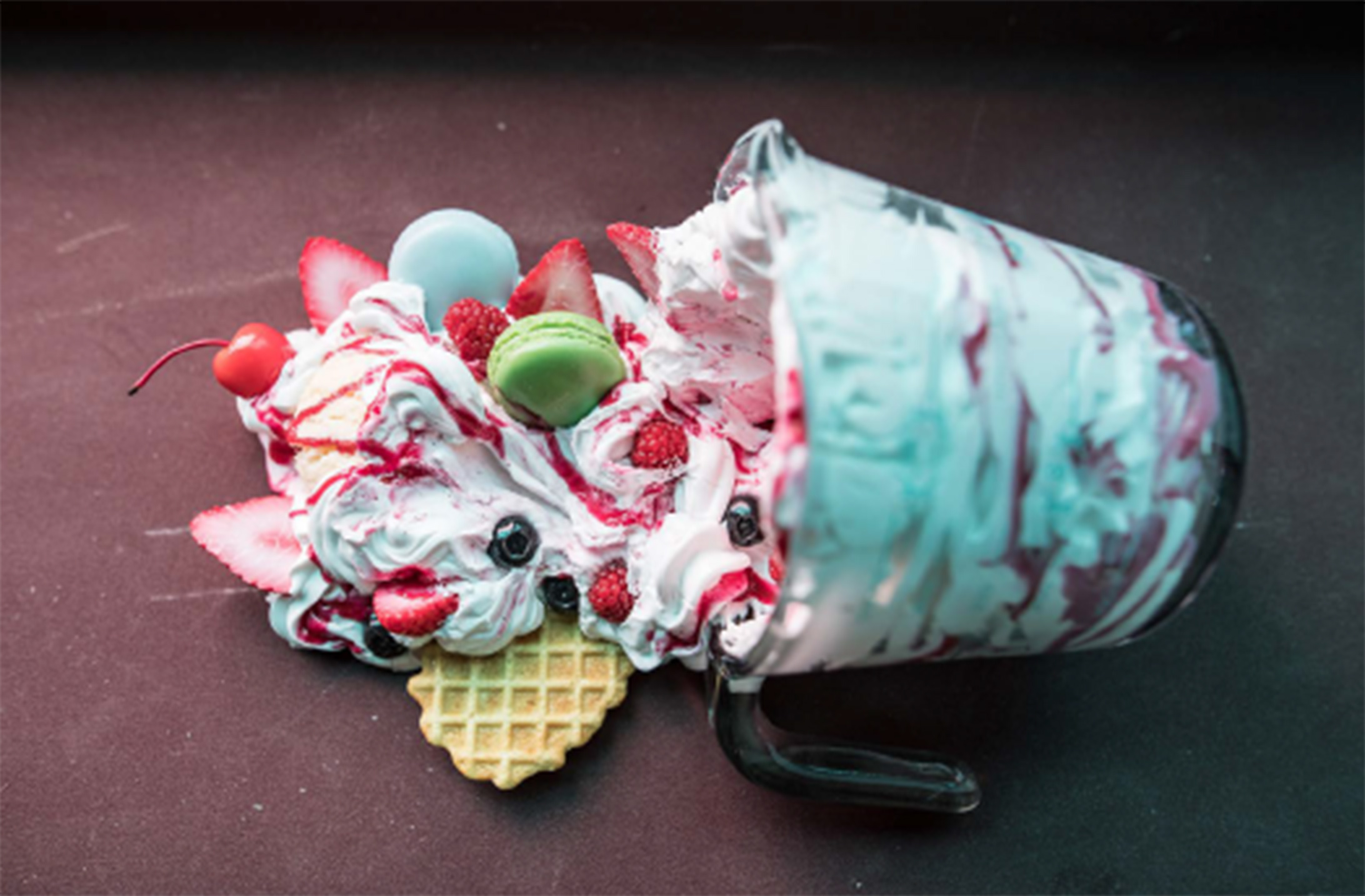 |
|
"Glacier in Progress" |
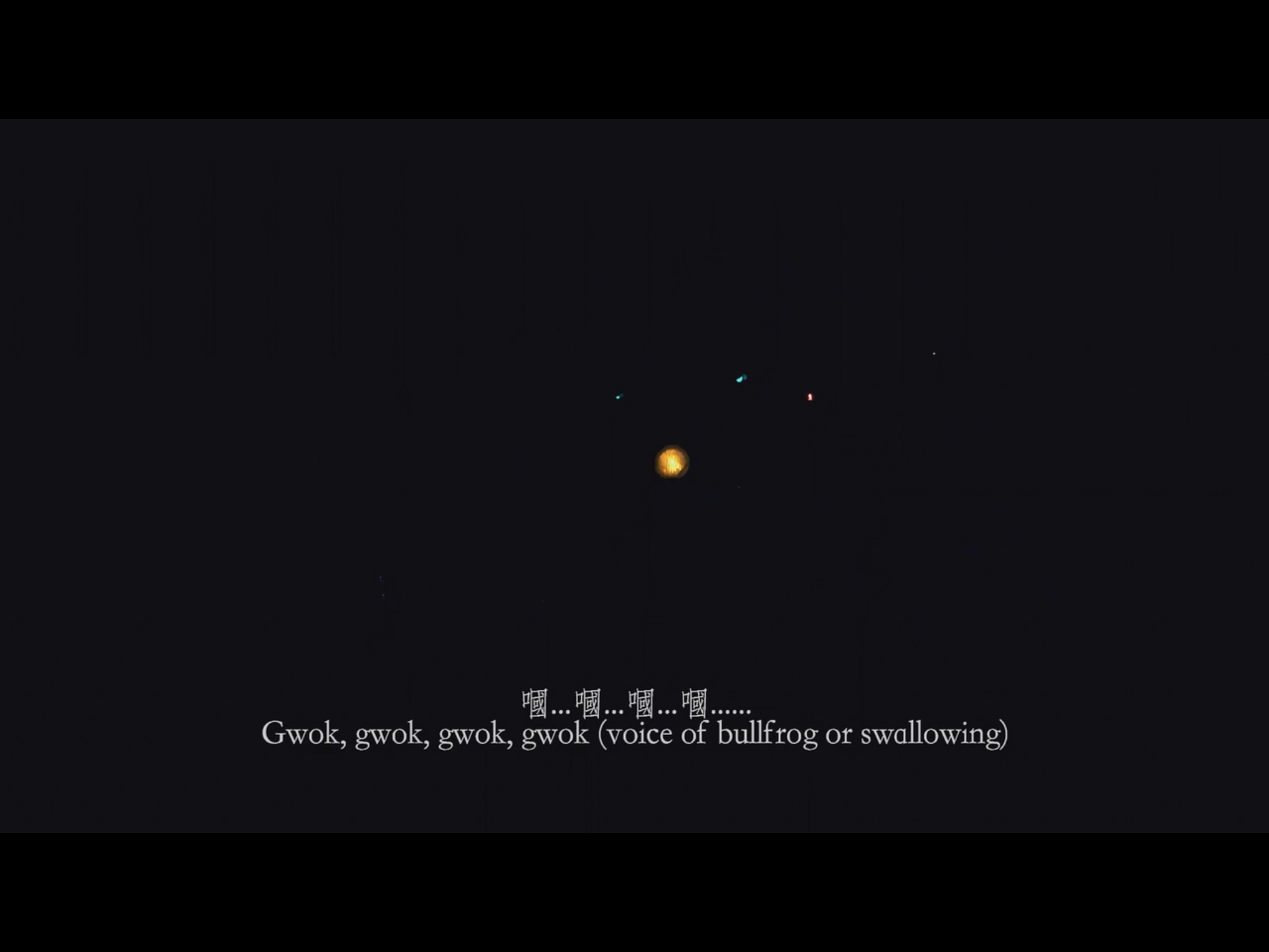 |
|
"Deep Flight"(still) |
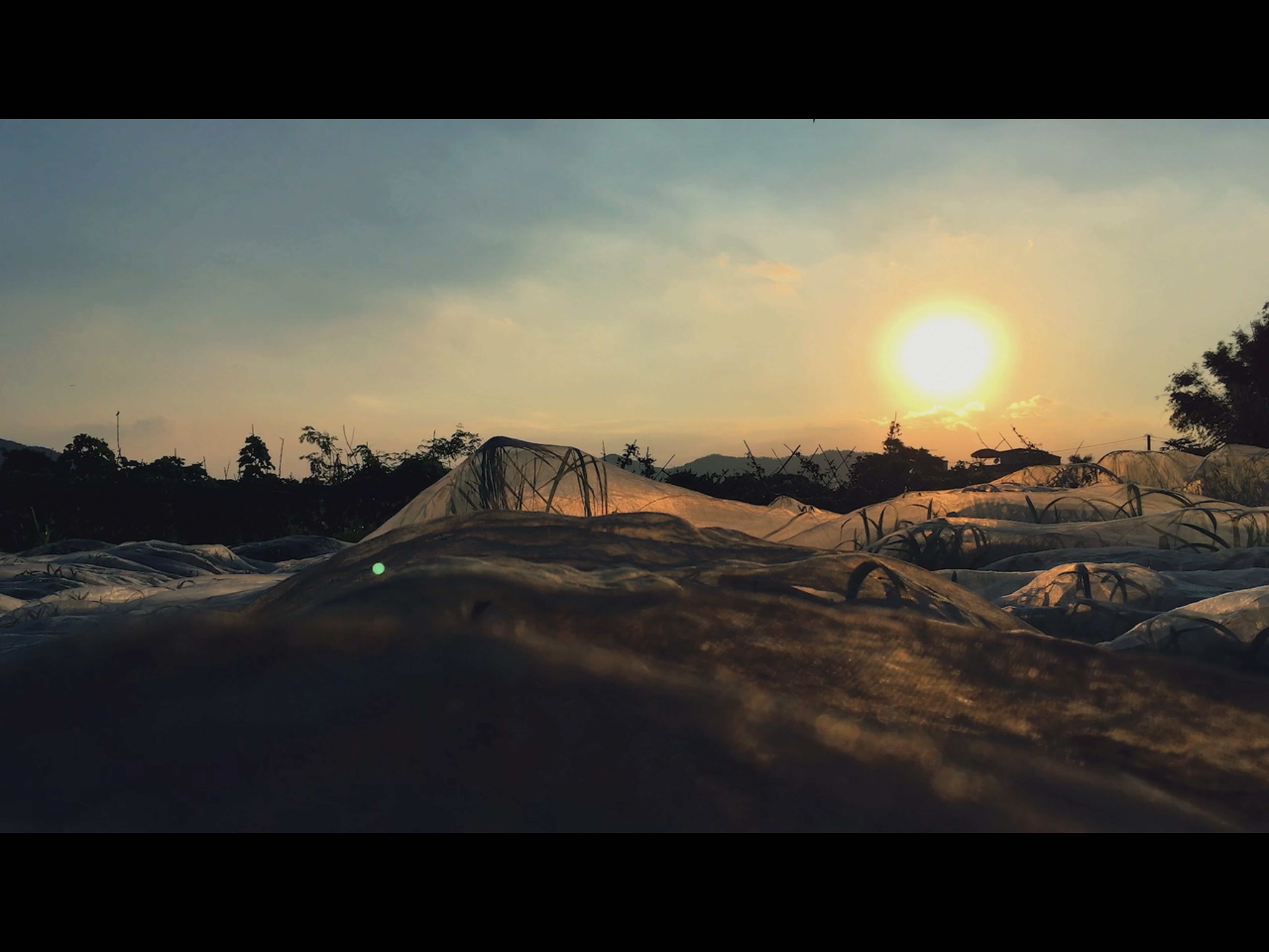 |
|
"Deep Flight"(still) |
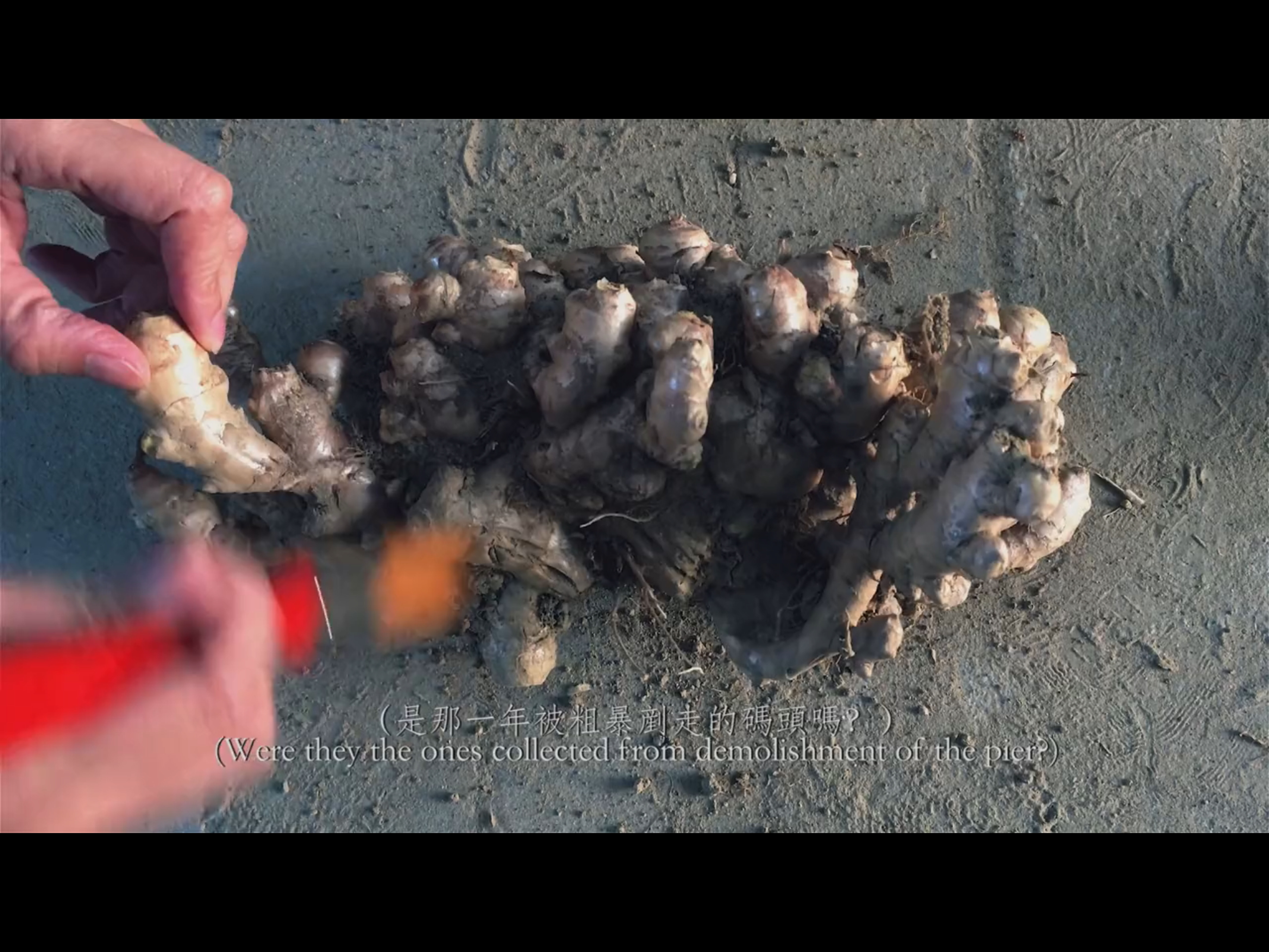 |
|
"Deep Flight"(still) |
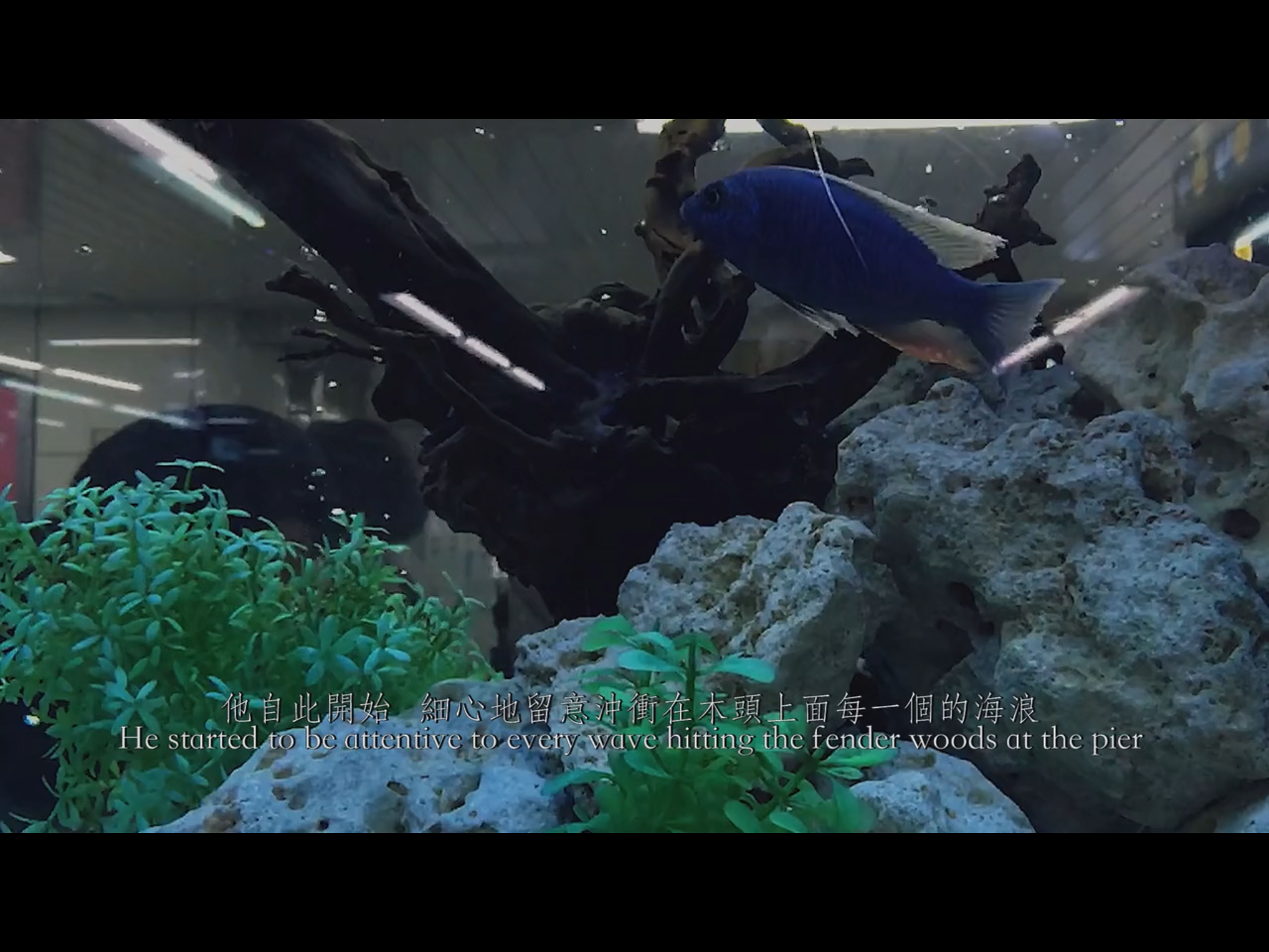 |
|
"Deep Flight"(still) |
"Deep Flight"
2017 / Colour / 9’20” / Single Channel Video/ Chinese & English Subtitles / Stereo
“She became a Deep Flight in the natural environment, never saying no, delivering diverse kinds of matter and happening, including desires.”
Deep Flight unfolds with the sound of frogs in the dark night. The film shows the flashing of the ship lights on the sea at night, and then the camera shoots at the water step by step: the reflection of the light on the ocean at night. The text wrote: "He mentioned to me / The atmospheric pressure doubles for every 10 meters of dive." The artist unfolds the story with this text: "I have a special skill / can connect to every corner of the world / when you wake up / I have gone to other places / to put it simply / I can be called the earliest generation of logistics company /[…] A lot of customers will come to me / the delivery is all sorts of strange and unusual / even including desire". The submarine in the video does not have a specific appearance. Lai-lai interspersed skies, snapshots of farmlands, pictures of farming, fish farming, ginger harvesting, etc. A submarine is no longer a machine that only appears in the ocean but can be found in the sea, sky, and mud. The artist associates the appearance of this machine with a piece of local ginger and understands diving from the logic of describing the elephant/hat in “The Little Prince.” The submarine opens the audience's imagination between the machine and nature. The film also ends with the sentence "(Who are you?)", leaving questions for the work to be asked.
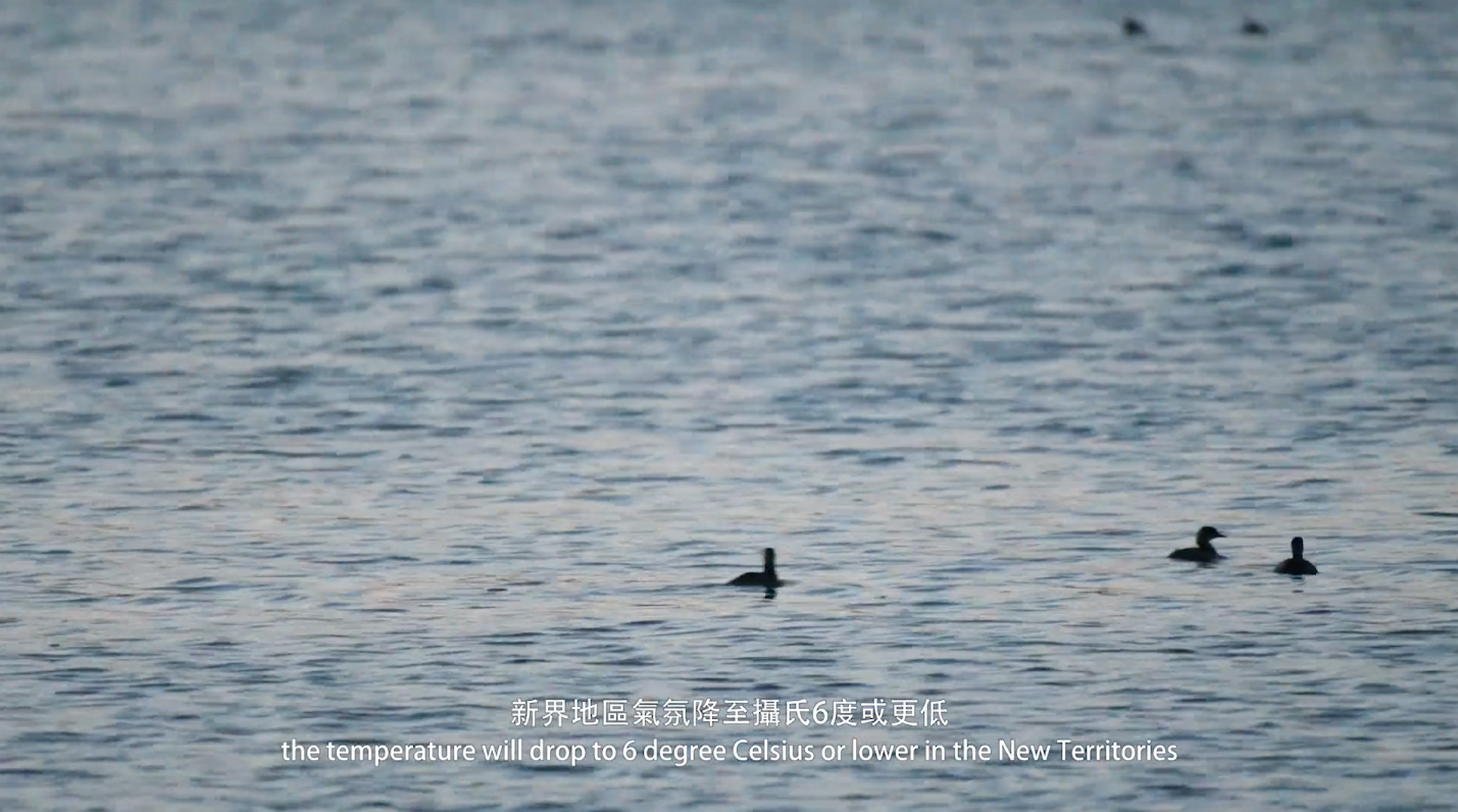 |
|
"Voices From Elsewhere"(Still) |
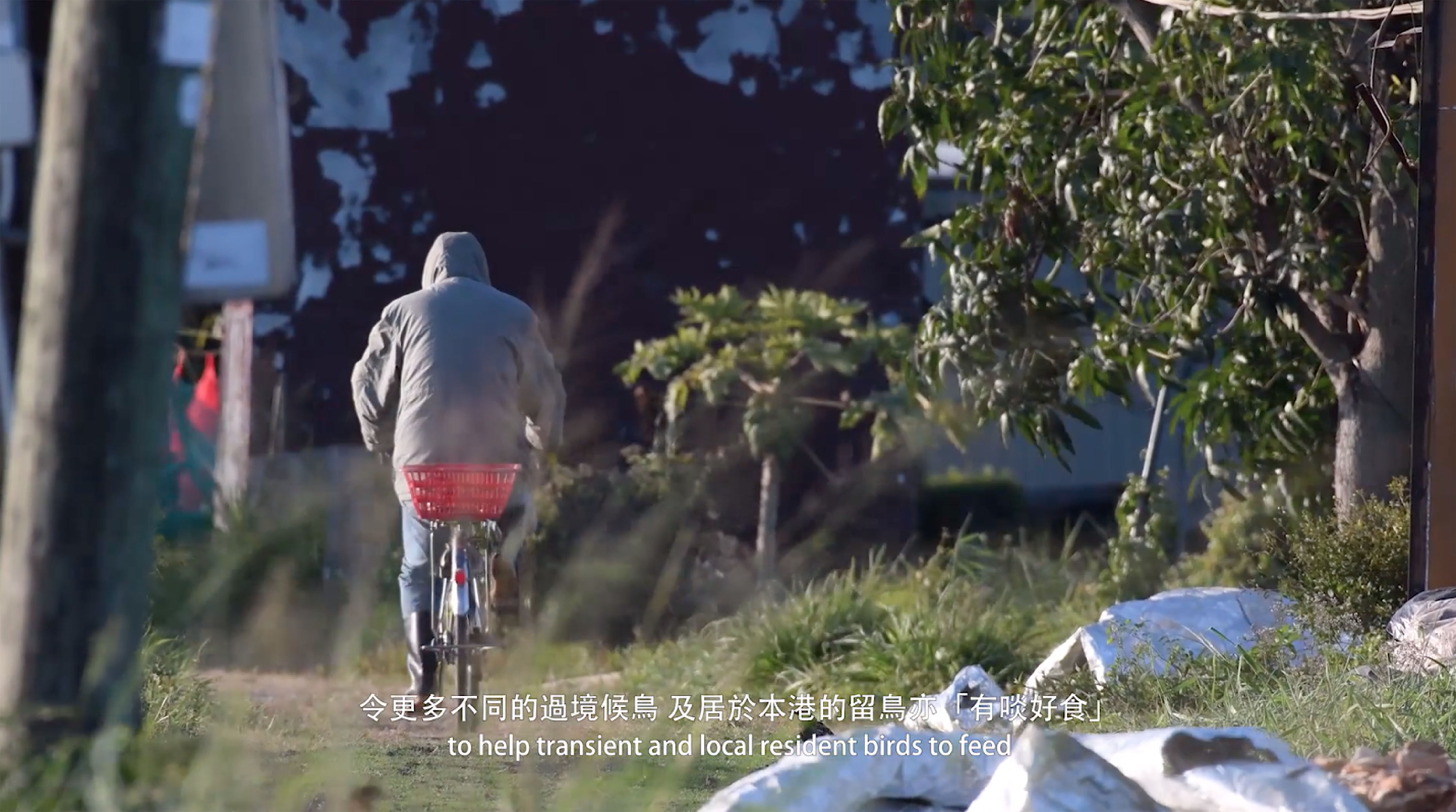 |
|
"Voices From Elsewhere"(Still) |
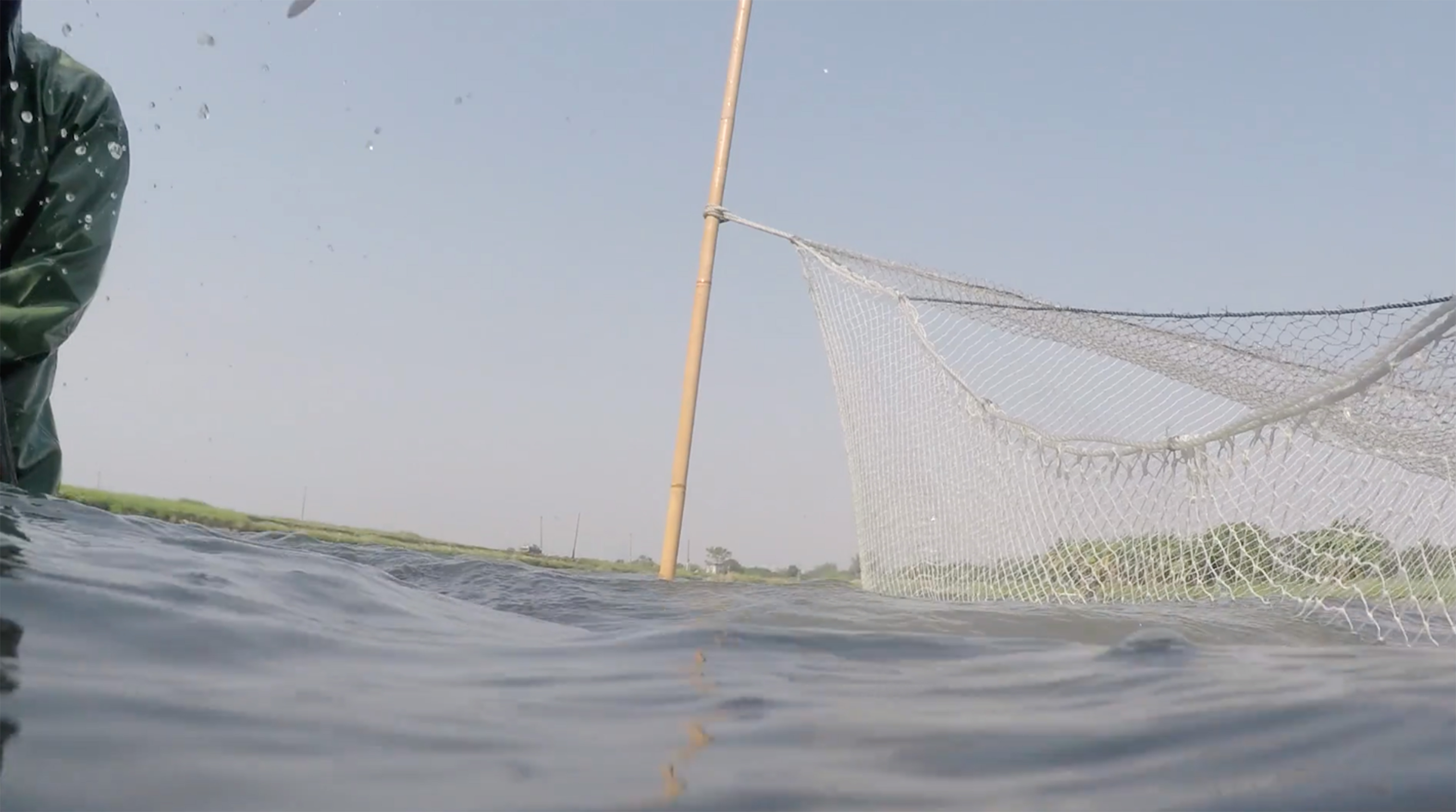 |
|
"Voices From Elsewhere"(Still) |
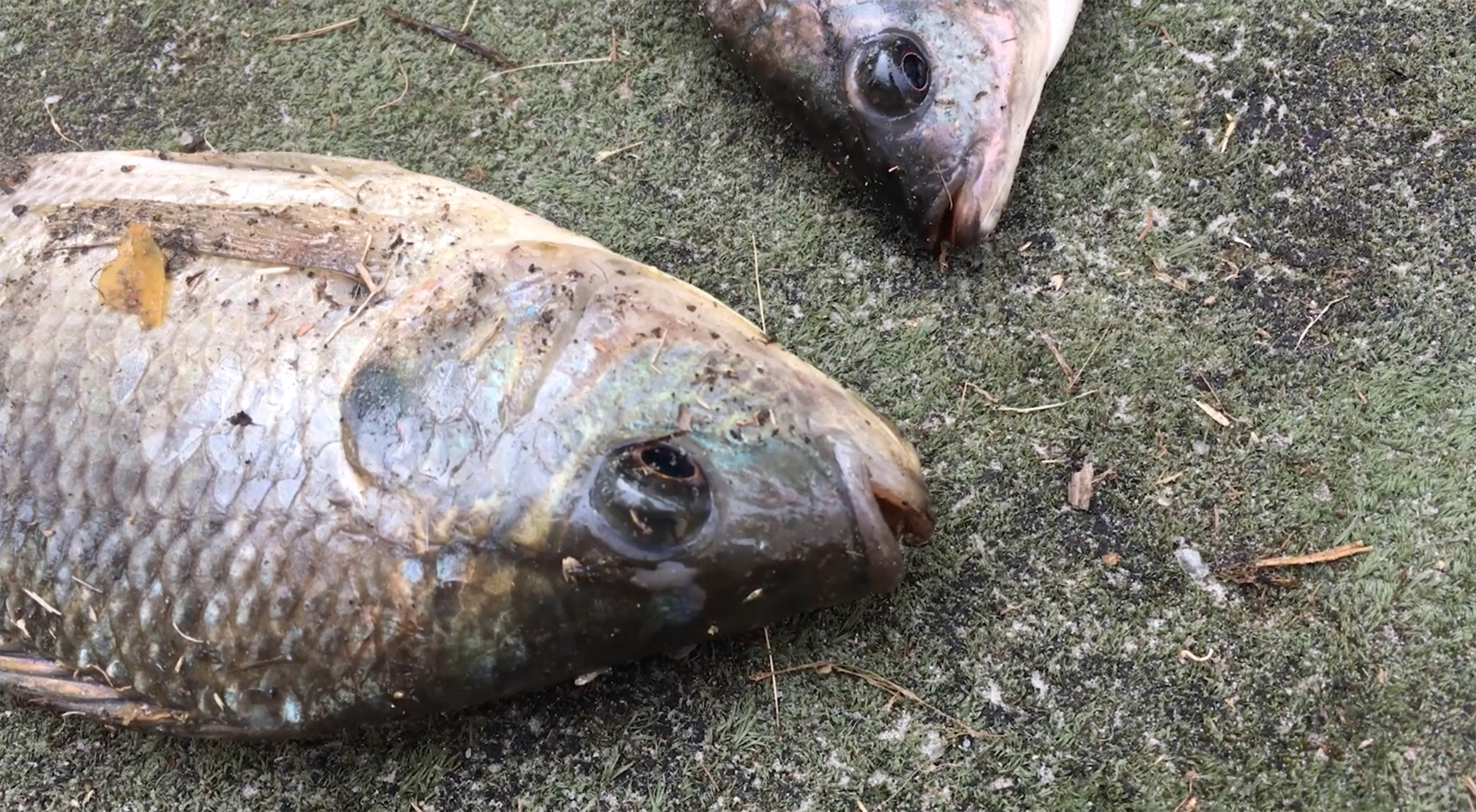 |
|
"Voices From Elsewhere"(Still) |
“Voices From Elsewhere” is a work about the food chain. The film starts from a reservoir in Yuen Long, Hong Kong, and talks about the relationship between humans and fish. However, Lai-lai did not use the preaching method to tell the story. On the contrary, the artist shows her attitude towards different species in this work. For her, different species live in the same ecology, so they should be able to interact with each other, understand, and even communicate. The film's narration is not human-centered, nor is it anthropomorphic from the perspective of fish. The film is from the point of view of an "observer." The angle of this "observer" is not biased towards any species. It is not intended to provoke humans to feel pity for fish, nor is it to amplify the process of human fishing. In this film, Lai-lai talks about the natural conditions that all species experience together, such as water, temperature, competition, etc. In the latter part of the video, the "observer" said: "After visiting the village, I realized the radio signal was quite erratic. Though it was supposed to be open to all living creatures. There was a man-made accident. Sometimes, you might only listen to 1 or 2 channels. When I just got the complaint, I thought I could reflect on the issue. Yet, I asked my colleague, he said the problem was there long ago, or actually no one listens to another channel at all." From the perspective of "observer," without romanticizing either party, without pretending to be a mystery to talk about the concept of cross-species, the artist combines daily language and images into another thesis-style film.
"Voices From Elsewhere"
2018 / / Colour/ 15” / Single Channel Video / Chinese and English subtitles / Stereo
At the artist talk of Lo Lai-lai’s solo exhibition “Down into the Abyss” in 2018, the young curator Leung Ho Yin said: “Lai-lai’s lifestyle is not just farming, but the practice of "half farming" and "half X" actually changed her observations. She sees things with her rhythm and vision, which is an internalized perspective, so she does not focus on rural life from the perspective of urban people, nor does she need to emphasize her identity as a farmer in her works. For Lai-lai, cities and farmland are not opposites.” [5] This is also the uniqueness of Lai-lai’s art. It does not show off the fake romance of rural life but slowly records different fragments of life to weave into one work after another. The emotions in the works are calm and light, just as the artist Ho Sin Tung wrote about her: "The emotions in Lai-lai's works are always soft, and she even describes her work as "cold." "[6]
Links:
-The artist’s website: lolailai.com
-Please visit this link to view RTHK’s TV Programme ‘Artspiration’ - "Self-work [Lo LaiLai: Thesis Film]," time code:2”56-11”19), 03/06/2018, copyright owned by RTHK.
© Unless otherwise stated, all photos courtesy of Lo Lai-lai. All rights reserved.